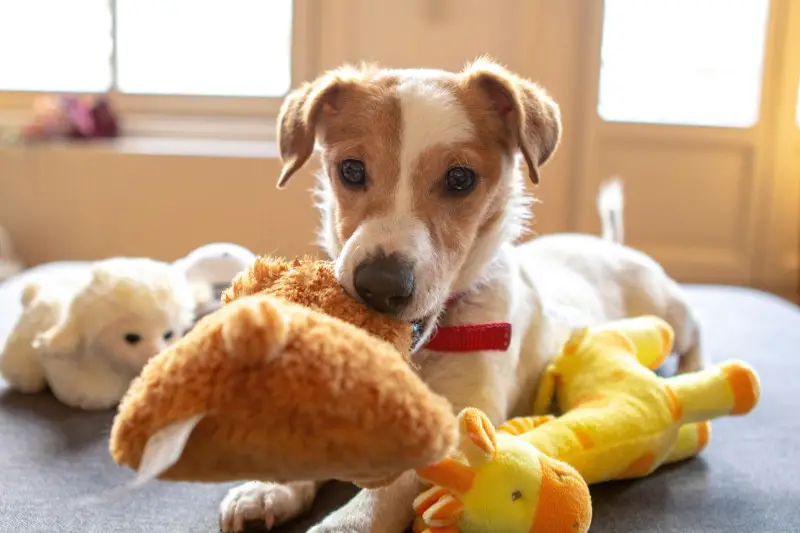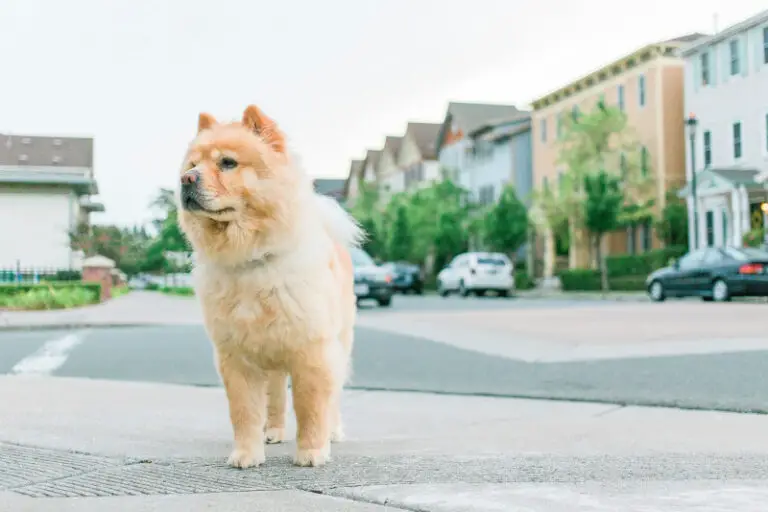There’s something incredibly endearing about your dog trotting over with a toy in its mouth, eyes gleaming with excitement. This simple act can bring immense joy and strengthen the bond between you and your furry friend. However, it can also be a bit puzzling when your dog brings you a toy but then refuses to let you take it. This behavior, while common, often leaves pet owners scratching their heads. Understanding why your dog behaves this way can deepen your connection and make playtime even more enjoyable. Dogs have a natural instinct to fetch and retrieve, a behavior that dates back to their wild ancestors. When your dog brings you a toy, it’s often an invitation to play, a sign of affection, or even a way to show off their prized possession. The act of fetching the ball or retrieving a toy is deeply ingrained in their DNA. However, the reluctance to let go of the toy can stem from various reasons, ranging from playful teasing to possessiveness. Imagine the joy your dog feels when you engage in a game of fetch. The excitement of the chase, the thrill of the catch, and the satisfaction of bringing the toy back to you are all part of a delightful experience for your pet. But when your dog doesn’t let you take the toy, it can be a playful challenge, a way to keep the game going, or a sign of their attachment to the toy. This behavior can be both amusing and frustrating, but it’s essential to understand the underlying reasons to address it effectively. For more insights into why dogs bring toys and the importance of these interactions, you can check out this detailed article on [dog bring me a toy](https://sweetdoggo.com/why-are-toys-important-for-dogs/). This resource offers valuable information on the significance of toys in a dog’s life and how they contribute to their overall well-being. By delving into the reasons behind this curious behavior, you can foster a more fulfilling relationship with your dog. Whether it’s through understanding their instincts, recognizing their need for play, or addressing any underlying issues, you’ll be better equipped to enjoy those precious moments when your dog brings you a toy, even if they don’t always let you take it.
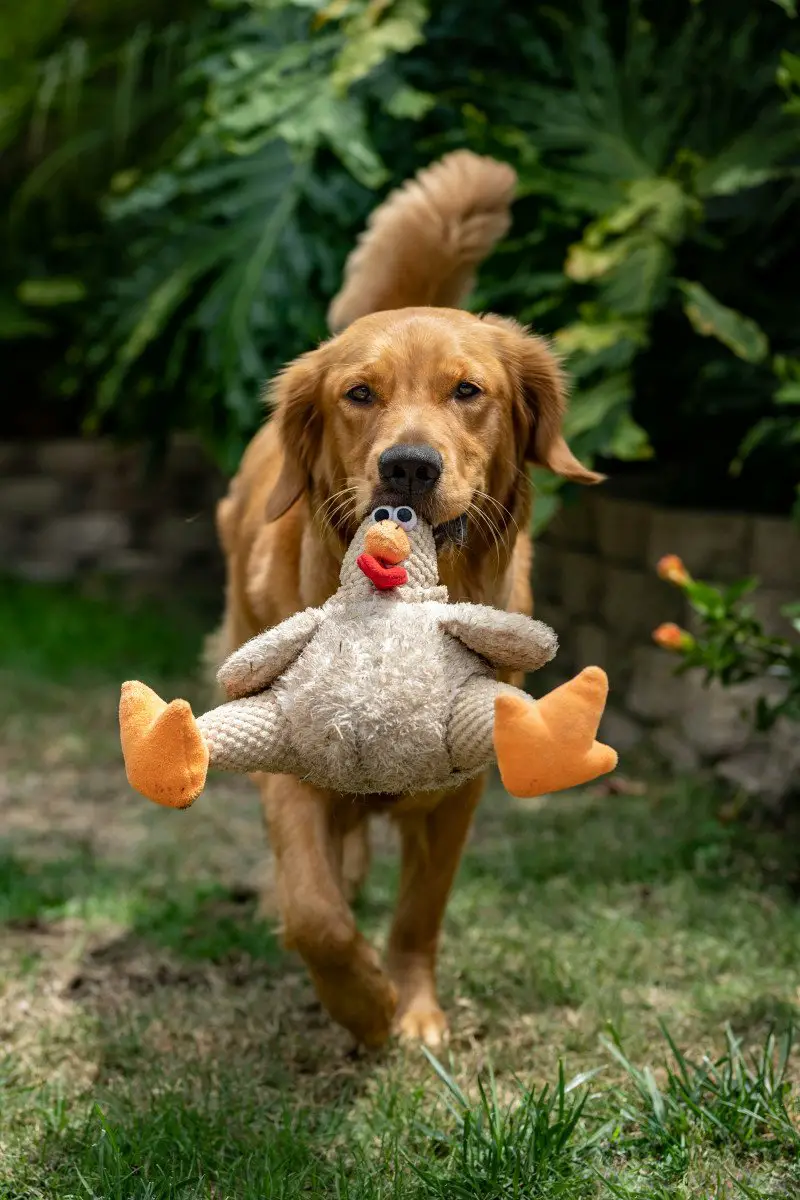
Photo by Samantha Fortney on Unsplash
Understanding Your Dog’s Behavior
Natural Instincts
Dogs are fascinating creatures with a rich history that influences their behavior today. Understanding these natural instincts can help you make sense of why your dog might bring you a toy but not let you take it.
Pack Mentality
Dogs are pack animals by nature. In the wild, they lived in groups where cooperation and social hierarchy were crucial for survival. This pack mentality is still present in domestic dogs. When your dog brings you a toy, it might be a way of including you in their “pack” activities. They see you as a member of their family and want to share their prized possessions with you. However, the reluctance to let go of the toy can be a way of asserting their position within the pack. It’s a subtle way of saying, “This is mine, but I trust you enough to show it to you.”
Hunting and Retrieving Instincts
The act of fetching the ball or retrieving a toy is deeply rooted in a dog’s hunting and retrieving instincts. Historically, dogs were bred for specific tasks, such as hunting and retrieving game. These instincts are still very much alive in modern dogs. When your dog brings you a toy, they are essentially mimicking the behavior of bringing back prey to their pack leader. The reluctance to let go of the toy can be traced back to the instinct to protect their catch from other members of the pack or potential threats.
Protective Nature
Dogs have a natural protective instinct, not just towards their human family but also towards their belongings. When your dog brings you a toy but doesn’t let you take it, they might be displaying a protective behavior. They want to show you their toy, but they also want to ensure it remains safe. This protective nature can be more pronounced in certain breeds known for their guarding instincts. Understanding this can help you approach the situation with more empathy and patience.
Psychological Factors
Beyond natural instincts, several psychological factors can influence your dog’s behavior. These factors can provide deeper insights into why your dog might bring you a toy but not let you take it.
Attachment to Toys
Dogs can form strong attachments to their toys, much like children do with their favorite stuffed animals. These toys can provide comfort, entertainment, and a sense of security. When your dog brings you a toy, they might be sharing something that holds significant emotional value to them. The reluctance to let go of the toy can be a sign of their attachment. They want to share their joy with you but are not ready to part with their beloved toy.
Sense of Ownership
Dogs have a well-developed sense of ownership. They recognize their toys as their possessions and can be quite possessive about them. When your dog brings you a toy but doesn’t let you take it, they might be asserting their ownership. This behavior is not necessarily a sign of aggression but rather a way of communicating that the toy belongs to them. It’s essential to respect this sense of ownership while gently encouraging sharing and cooperation.
Trust and Bonding Moments
Bringing you a toy can be a significant trust-building moment for your dog. It’s their way of showing that they trust you enough to share something valuable with you. However, the reluctance to let go of the toy can indicate that they are still testing the boundaries of this trust. Over time, as your bond with your dog strengthens, they might become more willing to let you take the toy. Patience and positive reinforcement can go a long way in building this trust.
Communication Methods
Dogs have their unique ways of communicating with us. Understanding these methods can help you interpret why your dog brings you a toy but doesn’t let you take it.
Inviting Play
One of the most common reasons dogs bring toys to their owners is to invite play. Fetch the ball, dog fetch toy, and dog play fetch are all activities that dogs enjoy and want to share with their human companions. When your dog brings you a toy, they are likely inviting you to join in a game. The reluctance to let go of the toy can be a playful challenge, a way to keep the game interesting and engaging. Recognizing this invitation can help you respond appropriately and make playtime more enjoyable for both of you.
Testing Boundaries
Dogs are naturally curious and enjoy testing boundaries. When your dog brings you a toy but doesn’t let you take it, they might be testing the limits of what they can get away with. This behavior can be a way of exploring their relationship with you and understanding the rules of engagement. It’s essential to set clear boundaries while being patient and understanding. Consistent training and positive reinforcement can help your dog learn the appropriate behavior.
Seeking Attention or Validation
Dogs thrive on attention and validation from their owners. Bringing you a toy can be a way of seeking your attention and approval. The reluctance to let go of the toy can be a way of prolonging the interaction and ensuring they have your full attention. Recognizing this need for attention can help you respond in a way that meets your dog’s emotional needs. Offering praise, affection, and engaging in play can provide the validation your dog is seeking. Understanding your dog’s behavior when they bring you a toy but don’t let you take it can deepen your bond and make your interactions more meaningful. By recognizing their natural instincts, psychological factors, and communication methods, you can respond in a way that fosters trust, cooperation, and joy. Whether it’s through a game of dog toy fetch, acknowledging their sense of ownership, or building trust through positive reinforcement, you’ll be better equipped to enjoy those precious moments with your furry friend.
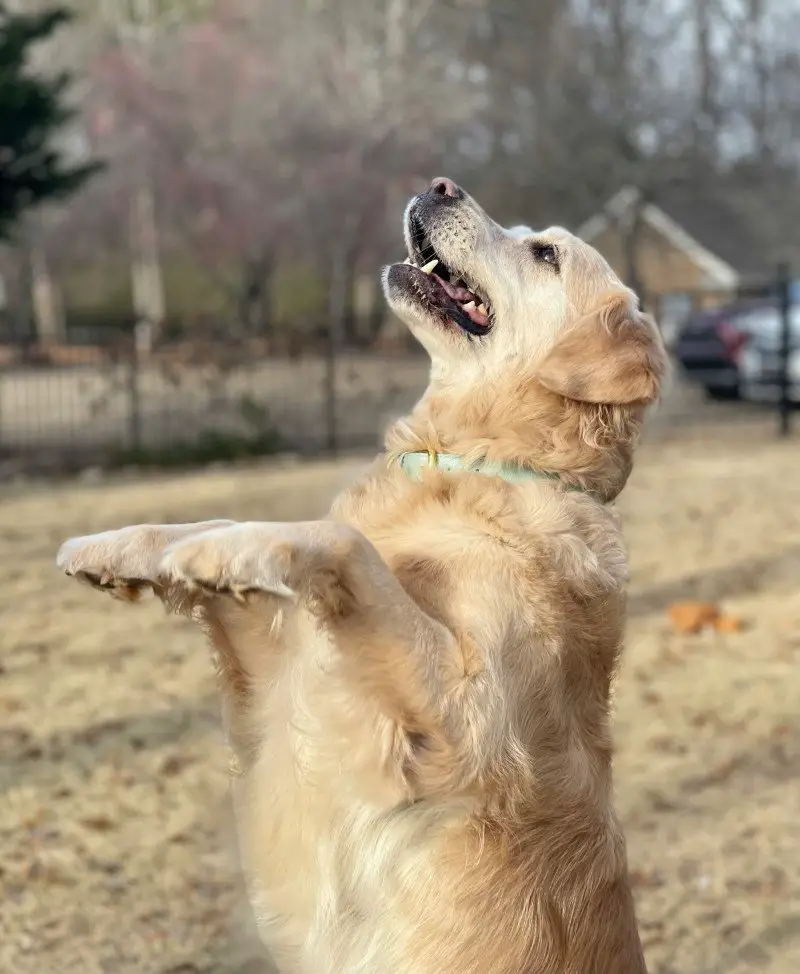
Photo by Tabitha Elkins on Unsplash
Common Scenarios
Playful Teasing
Dogs are natural entertainers, and playful teasing is one of the ways they keep interactions lively and engaging. When your dog brings you a toy but doesn’t let you take it, they might be engaging in a form of playful teasing. This behavior can be both amusing and a bit challenging, but understanding it can make playtime more enjoyable for both of you.
Tug-of-War Friendly Games
One of the most common forms of playful teasing is the tug-of-war game. When your dog brings you a toy and then pulls it away just as you reach for it, they are inviting you to engage in a friendly tug-of-war. This game is not only fun but also a great way to bond with your dog. It allows them to use their strength and agility while interacting with you. To make the most of this game, ensure that it remains friendly and doesn’t escalate into aggressive behavior. Establishing rules, such as letting go of the toy on command, can help maintain a positive and enjoyable experience.
High Energy Interactions
Dogs often have bursts of high energy, especially during playtime. When your dog brings you a toy but doesn’t let you take it, they might be trying to channel their energy into a fun and engaging activity. High-energy interactions, such as fetch the ball or dog fetch toy, can provide the physical and mental stimulation your dog needs. These activities allow your dog to burn off excess energy while enjoying quality time with you. Recognizing these high-energy moments and responding with appropriate play can help keep your dog happy and healthy.
Stimulation Through Challenge
Dogs love a good challenge, and playful teasing can be a way to stimulate their minds. When your dog brings you a toy but doesn’t let you take it, they might be creating a game that challenges both of you. This behavior can be seen in activities like dog toy fetch or dog fetch game, where the challenge of retrieving and holding onto the toy adds an extra layer of excitement. Embracing these challenges and turning them into structured games can provide mental stimulation and keep your dog engaged. Incorporating commands and rewards can make these games even more enriching.
Training Opportunities
The behavior of bringing a toy but not letting you take it can also present valuable training opportunities. By understanding and addressing this behavior, you can teach your dog important commands and improve their overall obedience.
Teaching “Give” and “Release”
One of the essential commands to teach your dog is “give” or “release.” When your dog brings you a toy but doesn’t let you take it, it’s an excellent opportunity to practice this command. Start by using a calm and firm voice to say “give” or “release” while gently holding the toy. When your dog lets go, immediately reward them with praise or a treat. Consistent practice of this command can help your dog understand that letting go of the toy leads to positive outcomes. Over time, this training can make playtime more enjoyable and less frustrating.
Reward-Based Motivators
Using rewards as motivators can be highly effective in training your dog to let go of the toy. When your dog brings you a toy but doesn’t let you take it, offer a high-value treat or another favorite toy as a trade. This reward-based approach can encourage your dog to release the toy willingly. Positive reinforcement, such as praise and treats, can reinforce the desired behavior and make your dog more likely to comply with the “give” or “release” command. Incorporating these motivators into your training routine can lead to incremental progress and a more cooperative dog.
Incremental Progress
Training your dog to let go of the toy requires patience and incremental progress. Start with short and simple training sessions, gradually increasing the difficulty as your dog becomes more comfortable with the command. Celebrate small victories and be consistent in your approach. Over time, your dog will learn to associate letting go of the toy with positive experiences. This incremental progress can lead to a more obedient and well-behaved dog, making playtime more enjoyable for both of you.
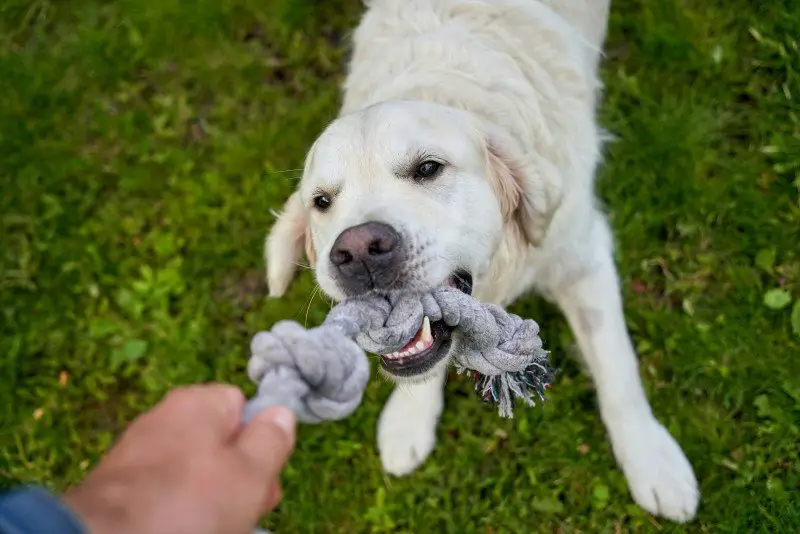
Photo by Barnabas Davoti on Unsplash
Miscommunication and Frustration
Miscommunication between you and your dog can lead to frustration, especially when it comes to playtime. Understanding and addressing these communication gaps can help create a more harmonious relationship.
Understanding Your Commands
One of the primary reasons for miscommunication is that your dog might not fully understand your commands. When your dog brings you a toy but doesn’t let you take it, they might be confused about what you want them to do. Clear and consistent commands are essential for effective communication. Use simple and distinct words for each command, and ensure that your dog understands their meaning. Repetition and positive reinforcement can help your dog grasp the commands and respond appropriately.
Avoiding Mixed Signals
Mixed signals can also contribute to miscommunication and frustration. When your dog brings you a toy but doesn’t let you take it, ensure that your actions and words are consistent. Avoid using different commands for the same action, as this can confuse your dog. Additionally, be mindful of your body language and tone of voice, as dogs are highly perceptive to these cues. Consistency in your communication can help your dog understand your expectations and respond accordingly.
Maintaining Patience and Consistency
Patience and consistency are key to overcoming miscommunication and frustration. Training your dog to let go of the toy and respond to commands takes time and effort. It’s essential to remain patient and avoid getting frustrated, as this can negatively impact your dog’s behavior. Consistent training sessions, positive reinforcement, and a calm demeanor can help create a positive learning environment for your dog. Over time, your dog will learn to understand your commands and respond appropriately, leading to a more enjoyable and frustration-free playtime. By recognizing and addressing these common scenarios, you can better understand your dog’s behavior and create a more fulfilling relationship. Whether it’s through playful teasing, training opportunities, or overcoming miscommunication, you’ll be better equipped to enjoy those precious moments when your dog brings you a toy, even if they don’t always let you take it.
Tips and Solutions
Effective Play Strategies
Engaging your dog in effective play strategies can make a significant difference in their behavior and overall happiness. When your dog brings you a toy but doesn’t let you take it, employing these strategies can help create a more enjoyable and cooperative playtime experience.
Rotate Toys to Maintain Interest
Dogs can quickly become bored with the same toys, leading to a lack of interest in playtime. To keep your dog engaged, rotate their toys regularly. Introducing new toys or reintroducing old favorites can reignite their excitement. This strategy can be particularly effective in maintaining their interest in fetch the ball or dog fetch toy activities. By keeping the toy selection fresh, you can ensure that your dog remains enthusiastic about playtime and is more likely to engage in cooperative behavior.
Incorporate Fetch and Retrieval Games
Fetch and retrieval games are excellent ways to channel your dog’s energy and instincts. Activities like dog toy fetch, dog retrieve ball, and dog fetch game can provide both physical and mental stimulation. These games allow your dog to exercise their natural retrieving instincts while enjoying quality time with you. To make these games more effective, use clear commands and positive reinforcement. Encourage your dog to bring the toy back to you and reward them for letting go. This approach can help create a structured and enjoyable playtime routine.
Engage in Regular Playtime
Consistency is key when it comes to playtime. Engaging in regular play sessions can help establish a routine that your dog looks forward to. Set aside dedicated time each day for activities like dog play fetch or dog toy play. Regular playtime not only provides physical exercise but also strengthens the bond between you and your dog. By making playtime a consistent part of your daily routine, you can create a positive and cooperative environment that encourages your dog to bring you toys and let go willingly.
Positive Reinforcement
Positive reinforcement is a powerful tool in shaping your dog’s behavior. When your dog brings you a toy but doesn’t let you take it, using positive reinforcement techniques can encourage them to let go and engage in cooperative play.
Reward Systems for Letting Go
Implementing a reward system can motivate your dog to let go of the toy. When your dog brings you a toy and releases it on command, immediately reward them with a treat or praise. This positive reinforcement helps your dog associate letting go of the toy with a positive outcome. Over time, they will be more likely to comply with the command, making playtime more enjoyable for both of you. Consistency in using rewards can reinforce the desired behavior and create a cooperative play environment.
Praise and Treats
Praise and treats are effective motivators for dogs. When your dog brings you a toy and lets go, shower them with praise and offer a treat. This positive reinforcement not only rewards the desired behavior but also strengthens the bond between you and your dog. Use a cheerful and encouraging tone to praise your dog, making them feel appreciated and valued. Incorporating treats as rewards can further motivate your dog to let go of the toy and engage in cooperative play.
Establishing Routine Play Commands
Establishing routine play commands can help create a structured and enjoyable playtime experience. Use clear and consistent commands for activities like fetch the ball or dog toy fetch. Commands such as “fetch,” “bring,” and “release” can help your dog understand what is expected of them. Reinforce these commands with positive reinforcement, such as praise and treats, to encourage compliance. By establishing routine play commands, you can create a predictable and cooperative play environment that enhances your dog’s enjoyment and behavior.
Professional Guidance
Sometimes, despite your best efforts, you may need professional guidance to address your dog’s behavior. Seeking the help of behavioral trainers or canine experts can provide valuable insights and solutions.
Behavioral Trainers
Behavioral trainers specialize in understanding and addressing various dog behaviors. If your dog consistently brings you a toy but doesn’t let you take it, a behavioral trainer can help identify the underlying causes and develop a tailored training plan. These professionals use positive reinforcement techniques and structured training sessions to address specific behaviors. Working with a behavioral trainer can provide you with the tools and knowledge to effectively communicate with your dog and encourage cooperative play.
Canine Experts for Advice
Canine experts, such as veterinarians or animal behaviorists, can offer valuable advice on your dog’s behavior. If you’re struggling to understand why your dog brings you a toy but doesn’t let you take it, consulting with a canine expert can provide insights and recommendations. These professionals can assess your dog’s behavior, health, and environment to identify any contributing factors. Their expertise can help you develop a comprehensive approach to address the behavior and create a more enjoyable playtime experience.
Addressing Underlying Issues
In some cases, underlying issues such as anxiety, possessiveness, or lack of training can contribute to your dog’s behavior. Addressing these issues requires a holistic approach that considers your dog’s physical and emotional well-being. Professional guidance can help identify and address these underlying issues through targeted training, behavior modification, and environmental adjustments. By addressing the root causes, you can create a more positive and cooperative play environment for your dog. Implementing these tips and solutions can help you better understand and address your dog’s behavior when they bring you a toy but don’t let you take it. Whether it’s through effective play strategies, positive reinforcement, or professional guidance, you’ll be better equipped to create a fulfilling and enjoyable playtime experience for both you and your furry friend. Embracing these approaches can strengthen your bond, enhance your dog’s behavior, and make those precious moments of playtime even more special.
Conclusion
Embracing the quirks and joys of dog ownership is one of the most rewarding aspects of having a furry friend. Dogs bring an abundance of love, joy, and sometimes puzzling behaviors into our lives. When your dog brings you a toy but doesn’t let you take it, it’s just one of those endearing quirks that make them unique. Instead of viewing this behavior as a frustration, try to see it as an opportunity to understand your dog better and to engage in meaningful interactions. Every dog has its personality, and these little quirks are part of what makes them special. Embracing these behaviors with a sense of humor and patience can transform potential frustrations into moments of joy. When your dog engages in playful teasing or challenges you with a game of tug-of-war, they are not just playing; they are communicating and bonding with you. These moments are precious and can be cherished as part of the unique relationship you share with your dog. Understanding that these behaviors are rooted in natural instincts, psychological factors, and communication methods can help you approach them with empathy. Recognizing that your dog might be inviting you to play, testing boundaries, or seeking attention can shift your perspective and make these interactions more enjoyable. By embracing these quirks, you can create a more positive and fulfilling relationship with your dog. Strengthening the bond with understanding and patience is key to a harmonious relationship with your dog. When your dog brings you a toy but doesn’t let you take it, it’s an opportunity to build trust and cooperation. Patience is essential in training and understanding your dog’s behavior. Consistent positive reinforcement, clear communication, and regular playtime can help your dog learn to trust you and respond to your commands. Building a strong bond with your dog requires time, effort, and a lot of love. By understanding their natural instincts and psychological needs, you can create a supportive environment that encourages positive behavior. Training sessions that focus on commands like “give” or “release,” combined with rewards and praise, can help your dog learn to let go of the toy willingly. This training not only improves their behavior but also strengthens the trust and connection between you. Professional guidance can also play a crucial role in addressing any underlying issues and providing tailored solutions. Behavioral trainers and canine experts can offer valuable insights and techniques to help you understand and manage your dog’s behavior. Their expertise can help you create a more cooperative and enjoyable playtime experience, further strengthening the bond with your dog. In conclusion, when your dog brings you a toy but doesn’t let you take it, it’s a behavior that can be understood and addressed with empathy, patience, and positive reinforcement. Embracing these quirks and joys of dog ownership can transform potential frustrations into cherished moments. By strengthening the bond with understanding and patience, you can create a fulfilling and joyful relationship with your furry friend. These moments of play and interaction are not just about the toys; they are about the love, trust, and connection you share with your dog. Embrace them, cherish them, and enjoy the unique journey of dog ownership.

